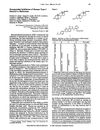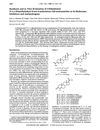Search
forProducts matching "type i 5 reductase inhibitors"
Tracking 5 products like 130 UK MADE 1MG FINASTERIDE, 183 PROPECIA 1MG/*28 TABL, 183 PROPECIA 1MG/*28 TABL, 183 PROPECIA 1MG/*28 TABL and 183 PROPECIA 1MG/*28 TABL from by companies like Minoxidil Express, OnlinePharmacy-BG, Inhouse Pharmacy, oasisstad.net and oxfordon line pharmacy. View all 5 products »Learn
5 / 7 resultslearn Osteopontin
signaling protein that, when suppressed, may grow hair by reducing inflammation and stem cell loss
learn Dutasteride
Heavy duty finasteride that comes with higher risks, but scalp injections seem safe and are gaining popularity
learn Finasteride
Frontline, gold standard treatment for combatting androgenic alopecia
learn Metformin
diabetes drug with anti-inflammatory, immunomodulatory, and insulin-sensitizing properties
Research
5 / 1000+ results
research Nonsteroidal Inhibitors of Human Type I Steroid 5α-Reductase
New compounds called benzoquinolinones may treat conditions linked to excess DHT.
![Synthesis and In Vitro Study of 17β-[N-Ureylene-N,N′-Disubstituted]-4-Methyl-4-Aza-5α-Androstan-3-Ones as Selective Inhibitors of Type I 5α-Reductase](/images/research/d19df8a7-8de6-4430-8a0d-4ffa1f502985/small/15608.jpg)
research Synthesis and In Vitro Study of 17β-[N-Ureylene-N,N′-Disubstituted]-4-Methyl-4-Aza-5α-Androstan-3-Ones as Selective Inhibitors of Type I 5α-Reductase
New compounds were made that effectively block a specific enzyme related to androgen conditions.

research Synthesis and In Vitro Evaluation of 4-Substituted N-(1,1-Dimethylethyl)-3-Oxo-4-Androstene-17β-Carboxamides as 5α-Reductase Inhibitors and Antiandrogens
The new compounds moderately block a specific enzyme and strongly counteract a male hormone, suggesting potential for treating certain male-related health conditions.

research A New Era of 5α-Reductase Inhibitors for Androgenetic Alopecia
New drug dutasteride effectively treats hair loss, but use cautiously due to potential sexual side effects.

research 5α-Reductase Inhibitors and Prostatic Disease
5α-Reductase inhibitors can help treat hair loss, acne, and prostate issues by reducing DHT levels.
Community Join
5 / 1000+ resultscommunity Finasteride - impact on Neurosteroids, which yes, \are important and not a garbage hormone
Finasteride may affect neurosteroids, impacting mood and sexual function, with varied user experiences. Some report side effects like depression and sexual dysfunction, while others find it effective for hair retention or prefer alternatives like Dutasteride or topical treatments.
community Topical Finasteride Doesn't Directly Reduce 5ar Enzyme on Scalp
Topical Finasteride doesn't directly reduce 5ar enzyme on scalp and has the same mechanism as oral, needing to go through the liver. Users debate the accuracy of this information and discuss various studies and experiences.
community 5ARI (dutasteride) Associated with Adverse Metabolic Effects
Dutasteride is associated with increased blood glucose, HbA1c, LDL cholesterol, and liver enzyme activity, potentially leading to diabetes, NAFLD, and liver metabolism changes. The conversation highlights concerns about these adverse effects and calls for more studies, including on finasteride.

community Can I still save my hairline at age of 15?
A 15-year-old is concerned about hair loss, possibly at Norwood 2 or 3, and is using shampoos and conditioners recommended by a trichologist. Suggestions include considering topical minoxidil and consulting a doctor about topical anti-DHT treatments like finasteride or RU58841, but avoiding 5-alpha-reductase inhibitors at this age.
community Real world data from Europe shows that DUT is significantly safer than FIN in long term use
Dutasteride is safer than finasteride for long-term use, with fewer sexual side effects. Users experience better hair regrowth and fewer side effects with dutasteride.